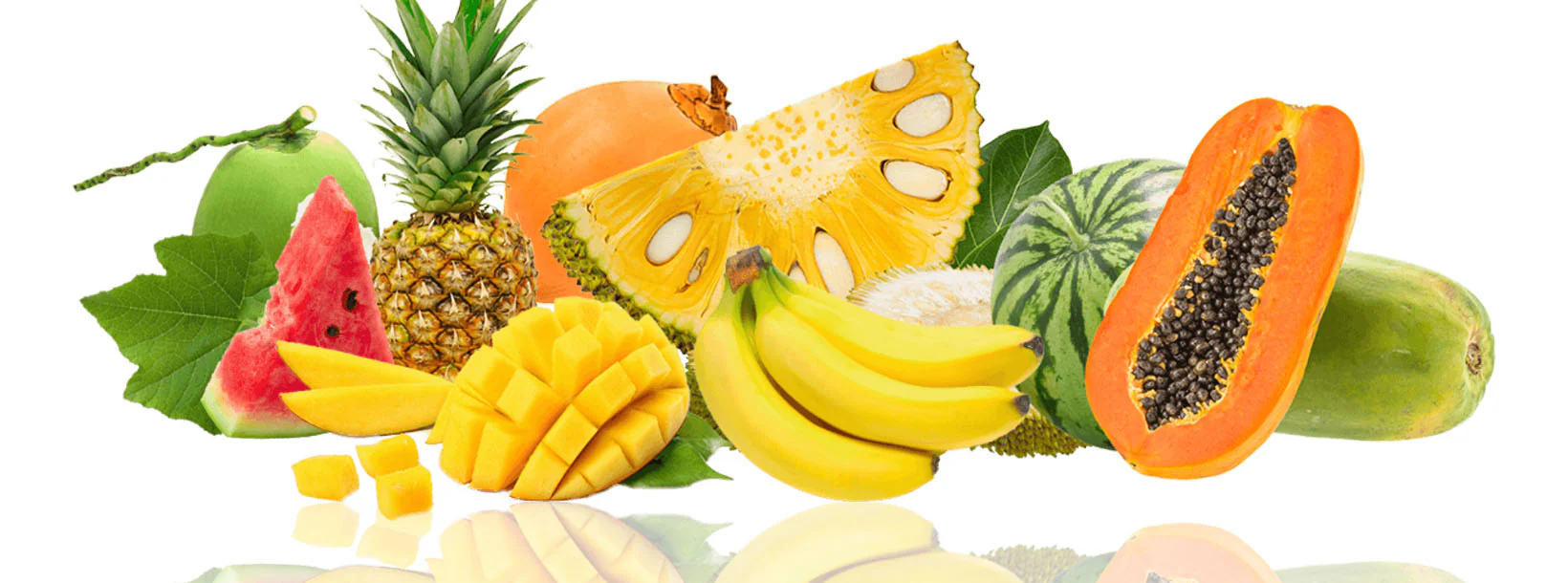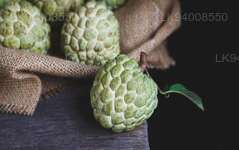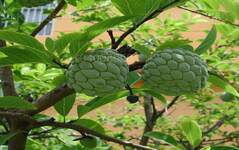
Sri Lankan Fruits
Sri Lanka boasts a vibrant array of tropical fruits that reflect its rich agricultural heritage. Among the most beloved is the king coconut (thambili), cherished for its sweet, refreshing water, perfect for quenching thirst in the tropical heat.
Sugar Apple ෴ වැලි අනෝදා
Sugar apples (Annona squamosa) are the fruit of one of the most commonly grown Annona trees. Depending upon where you find them, they go by a plethora of names, amongst them include sweetsop, custard apple and the apropos scaly custard apple. The sugar apple tree varies in height from 10-20 feet (3-6 m.) with an open habit of irregular, zigzagging twigs. Foliage is alternate, dull green on top and pale green on the underside. Crushed leaves have an aromatic scent, as do the fragrant flowers which may be single or in clusters of 2-4. They are yellow-green with a pale yellow interior borne off of long drooping stalks. Fruit of sugar apple trees is as about 2 ½ to 4 inches (6-10 cm.) long. Each fruit segment typically contains a ½-inch (1 cm.) long black to dark brown seed, of which there may be up to 40 per sugar apple. Most sugar apples have green skins, but a dark red variety is attaining some popularity. Fruit ripens 3-4 months after flowering in the spring.
Sugar Apple Information
No one is exactly sure where sugar apples hail from, but they are commonly cultivated in tropical South America, southern Mexico, the West Indies, Bahamas and Bermuda. Cultivation is most extensive in India and is wildly popular in the interior of Brazil. It can be found growing wild in Jamaica, Puerto Rico, Barbados and in the drier regions of North Queensland, Australia.
It’s likely that Spanish explorers brought seeds from the New World to the Philippines, while the Portuguese are thought to have brought the seeds to southern India prior to 1590. In Florida, a “seedless” variety, ‘Seedless Cuban,’ was introduced for cultivation in 1955. It does have vestigial seeds and has a less developed flavor than other cultivars, grown primarily as a novelty.
Sugar Apple Uses
The fruit of the sugar apple tree is eaten out of hand, separating the fleshy segments from the outer peel and spitting the seeds out. In some countries, the pulp is pressed to eliminate the seeds and then added to ice cream or combined with milk for a refreshing beverage. Sugar apples are never used cooked.
The seeds of the sugar apple are poisonous, as are the leaves and bark. In fact, powdered seeds or dried fruit has been used as a fish poison and insecticide in India. A seed paste has also been used pasted on the scalp to rid people of lice. The oil derived from the seeds has also been used as a pesticide. Conversely, the oil from sugar apple’s leaves has a history of use in perfumes.
In India, the crushed leaves are snorted to treat hysteria and fainting spells and topically applied to wounds. A leaf decoction is used throughout tropical America to treat a multitude of symptoms, as too is the fruit.























